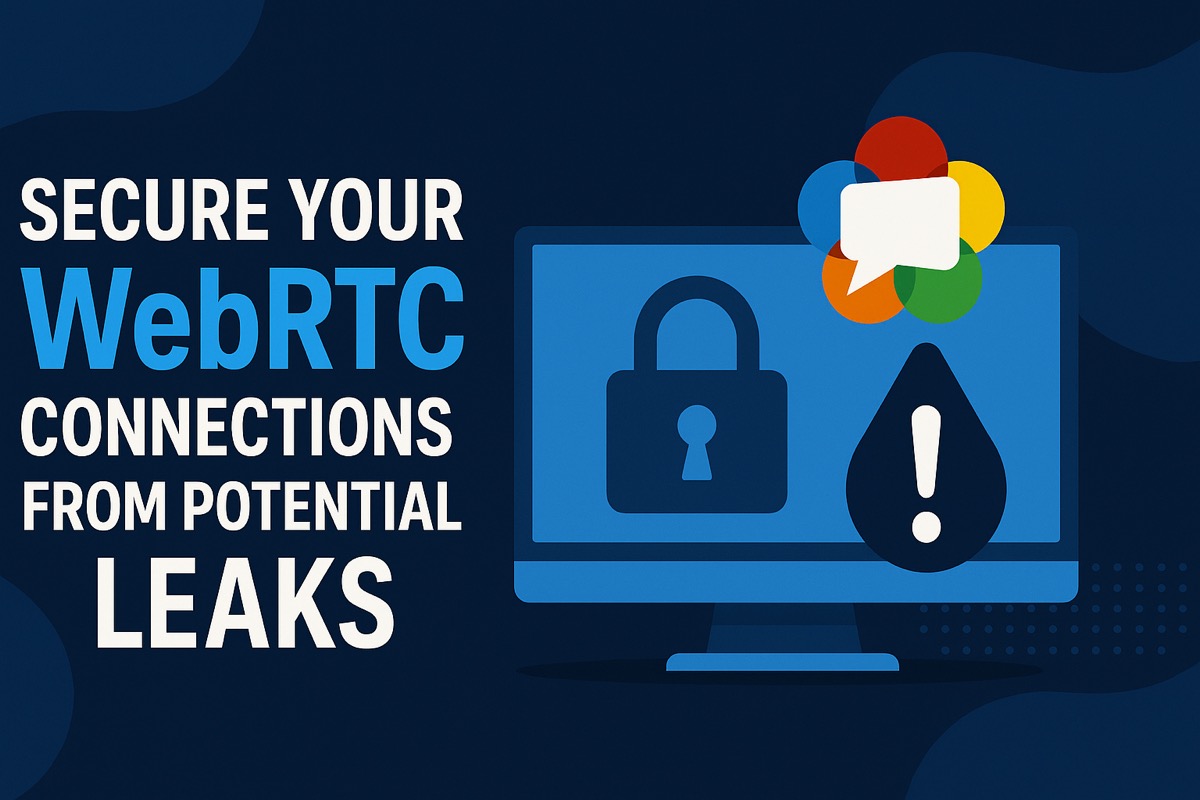WebRTC (Web Real-Time Communication) is a robust technology that supports direct, peer-to-peer communication between devices and browsers. It eradicates the need for external software or plugins that can delay connections. The technology supports real-time data, video, and audio sharing. Web apps leverage this technology to facilitate seamless video calls, file transfers, and voice chats. Many browsers have WebRTC built into their systems.
5 Ways to Protect Your WebRTC Connections From Unexpected Leaks
WebRTC is efficient and fast but poses several threats when improperly secured. Leaks occur when websites and apps access your local and public IP addresses. WebRTC uses STUN servers to detect network interfaces, which can expose your network identification information. Leaks allow attackers and websites access to your location, enabling targeted ads, cyberattacks, and location tracking. The following five strategies can safeguard your WebRTC connections from leaks.
1) Test for Leaks
Every strategy or tool for securing WebRTC connections is never 100% accurate. Instead of leaving your connections to chance, test for WebRTC leaks. A TCP WebRTC leak test can identify weak points through which devices and browsers reveal your IP address. The information can help you seal areas through which malicious actors, websites, and advertisers can bypass anonymity measures and compromise privacy.
The best online WebRTC connection testing tools can simulate scenarios where WebRTC can reveal your IP address. It can enable you to verify the efficiency of your privacy setup. Users can leverage the information to make more informed preventive decisions to prevent vulnerabilities. Regular testing ensures browser and device setting updates cannot re-enable WebRTC leaks.
2) Proxy Servers
Safeguarding against WebRTC leaks requires hiding your network identification information. Proxy servers mask your IP address and route traffic through remote servers. Well-configured proxies can also encrypt traffic. This strategy prevents WebRTC from accessing the local IP address through browser APIs.
Proxies can aid you to reinforce your online guard. By restricting WebRTC from the browser settings, you can mitigate risks. Use proxies alongside technologies to block WebRTC to establish a robust protection layer, preventing any potential leaks.
3) VPNs With WebRTC Leak Protection
VPNs hide IP addresses to block potential interceptions. More advanced VPNs have built-in WebRTC leak guards to block WebRTC requests. The feature ensures your device keeps critical data under control. These tools can also enable you to access geo-locked or access-limited content.
Users can ensure unmatched protection for their WebRTC connections with advanced VPNs featuring premium leak protection features. These VPNs have built-in mechanisms or settings to manage or disable WebRTC functionality. Leveraging the best VPN tool helps maintain private and secure online connections.
4) Leverage Privacy-Focused Browsers
Many well-known browsers feature built-in privacy boosters. Firefox, Brave, Tor Browser, and others allow users to reconfigure their privacy settings. They help to enhance user anonymity and experience by blocking ads and minimizing tracking. Browsers with these built-in configurations and features can safeguard against information leaks. For instance, the Tor browser disables WebRTC by default to prevent IP leaks. Firefox and Brave let you restrict or control WebRTC behavior settings to avoid exposing your IP address.
You can also employ these privacy-focused browsers to protect your WebRTC connections against fingerprinting techniques. These browsers keep your activities anonymous. Thus, they block malicious scripts and ads from compromising your security.
5) Use Browser Extensions
Many browser extensions allow web users to safeguard their WebRTC connections against leaks. These tools offer users control over how to handle WebRTC requests. Many browsers have built-in extensions to limit or block WebRTC from revealing the IP address.
You can find reliable and robust extensions for most browsers. Many are lightweight and user-friendly. Users can set and configure the extensions within minutes. However, not all of them are 100% reliable. You can combine them with VPNs and proxies to avoid IP and data leaks.
Extensions seamlessly integrate with most browsers to add anonymity layers to the web browsing experience. They blend well with proxies and VPNs to maintain the highest privacy levels. These tools offer a robust security layer against WebRTC leaks.
Wrapping Up
WebRTC is a robust technology that enables seamless, real-time communication. The tool can expose your connection to trackers and malicious actors through IP address leaks. Remember, WebRTC connection leaks can disrupt your browsing experience.
Internet users can keep away from leaking WebRTC information in several ways. They can leverage proxies or VPNs to hide their IP address and maximize protection. Some users can also disable the feature on their browsers or use browsers with privacy protection features. These proactive strategies will make their WebRTC use experience smooth and secure.


